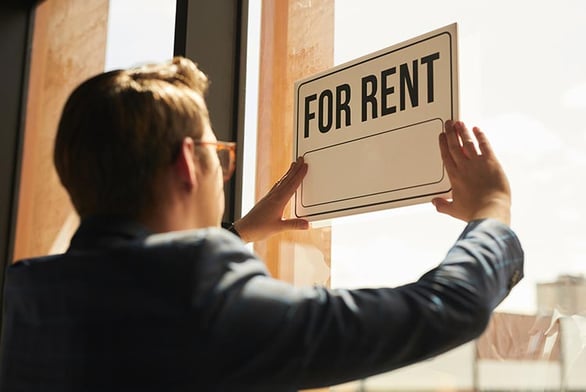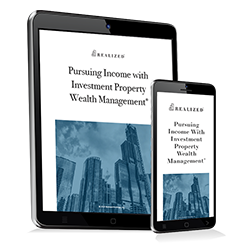
Buildings wear through normal use. It’s part of the old saying — nothing lasts forever. The IRS provides real estate investors with a tax benefit for the wear on their buildings. This tax benefit is called depreciation. Depreciation is a reduction in the value of an asset over time due to wear and tear.
Every year, the investor can claim a depreciation expense on their tax return, which reduces taxable income. Unlike some other expenses, depreciation is not an out-of-pocket expense. There is no impact on cash flow.
In this article, we’ll talk about how to file your annual depreciation expense, along with some examples of how to calculate it.
Related Tax Forms
IRS Publication 527 (Residential Rental Property) covers all aspects of rental property income, including depreciation.
Rental income and deductions are reported on Schedule E (Form 1040). Starting in Part I (1b), you can list up to three properties. If you have more than three properties, use additional Schedule E’s to list them. Once you reach lines 23-26, use only one Schedule E to fill them in. Schedule E page 2 is used if a partnership, S corporation, estate, trust, or real estate mortgage investment is involved.
Form 4562 (Depreciation and Amortization) may be required if you are filing the following depreciations:
- Depreciation, including the special depreciation allowance, on property placed in service during 2020.
- Depreciation on listed property (such as a car), regardless of when it was placed in service.
You can find a worksheet in the instructions for Form 4562. The worksheet does not need to be included in your filings.
Calculations
The depreciation expense is taken every year that an investment property is in use. But how much depreciation should be expensed annually?
The IRS has provided guidelines for calculating the annual depreciation expense. For commercial real estate, the general recovery period is 39 years. This means you can deduct a depreciation expense for up to 39 years for a specific commercial property. That’s ~2.6% of the property’s value for depreciation expense every year. We get that by dividing 39 by 100.
The recovery period is 27.5 years for residential rental properties, which is ~3.6% of the property’s value. Both types of depreciation are called straight-line depreciation because the expense is the same amount every year.
Note that land is not depreciated. Its value must be subtracted from the property’s value when calculating depreciation.
Let’s calculate the depreciation on residential rental property:
10 unit apartment complex
$500,000 — purchase price
$25,000 — acquisition cost
25% — land value
$500,000
+ $25,000
= $525,000 = cost basis
x 75% (building value only)
= $393,750 (depreciation basis)
27.5 (divide)
= $14,318.18 (annual depreciation)
This property can expense $14,318.18 in depreciation annually.
There is another way to depreciate property. It’s called a cost segregation analysis. It allows you to depreciate certain components of the property at different rates. Maybe the roof needs to be depreciated at a rate different from the cabinets or some other area of the building. Using this method, building contents can be depreciated over 5-7 years.
To utilize cost segregation analysis, you will need to do a cost segregation study. This requires hiring an accountant who does cost segregations. The accountant must be licensed to do these studies. The license is issued by the American Society of Cost Segregation Professionals. If your accountant is not licensed, you can use the ASCSP website to find a provider.
Tax Effect
Even though depreciation is an expense, it doesn’t affect cash flow. For that reason, it is called a paper expense. It does affect taxes. Let’s look at another example to see how.
Example without depreciation expense:
$500,000 property
$50,000 income
- $20,000 operating expenses
= $30,000 profit
@ 30% income tax rate = $30,000 x .30 = $9,000 taxes
= $30,000 - $9,000 = $21,000 profit after taxes
Example with depreciation expense:
= $525,000 = cost basis
x 75% (building value only)
= $393,750 (depreciation basis)
27.5 (divide)
= $14,318 (annual depreciation)
$30,000
- $14,318.18
= $15,682 profit after depreciation
@ 30% income tax rate = $15,682 x .30 = $4,704 taxes
$30,000
- $4,704
= $25,295 profit after taxes (actual cash flow)
Depreciation still applies even if you have zero profit. In that case, a loss is created, which can be used to offset income in other businesses.
Depreciation Recapture
By taking an annual depreciation expense every year, you’ve got a tax break without affecting cash flow. Once the property is sold, the IRS will want to reclaim some of that depreciation tax break. This is called depreciation recapture.
Because we’re talking about real estate investment properties, we’re dealing with real property rather than personal property. Real property is also called section 1250 property. The depreciation recapture (also called uncaptured section 1250 gain) rate on real property is capped at 25%, instead of ordinary tax rates for depreciation recapture on personal property.
Any gain remaining after subtracting depreciation from the sale is taxed at the capital gains rate.
We’ll use the same property from above to calculate the depreciation recapture and any additional capital gains.
$393,750 — depreciation basis (i.e., removal of land value)
- $143,180 — 10 years of depreciation @ $14,318/yr
= $250,570 — adjusted basis
$800,000 — sell price
- $250,570
= $549,230 — gain on sale
.25 x 143,180 = $35,795 — depreciation recapture
.20 x $406,250 ($549,230 - 143,180) = $81,250 — capital gains
Depreciation recapture and capital gains, assuming a gain above the depreciation recapture amount, create two different types of capital gains taxes. If the property is sold outright and there are no losses from other (business) activities to offset them, taxes may be owed.
Both taxes can be deferred through a 1031 exchange. In the above example, that’s a deferred of $117,045 in gains. By exchanging into like-kind property, taxes will be deferred until the property is sold. If the property is not sold and the owner passes away, the tax benefits can be passed on to his heirs. It’s best to work with your accountant to understand if a 1031 exchange is a good fit for you.
This material is for general information and educational purposes only. Information is based on data gathered from what we believe are reliable sources. It is not guaranteed as to accuracy, does not purport to be complete and is not intended to be used as a primary basis for investment decisions.
This is a hypothetical example that is demonstrating some mathematical principles. It does not illustrate any investment products and does not show past or future performance of any specific investment. Investing involves risk, including the loss of principal.



